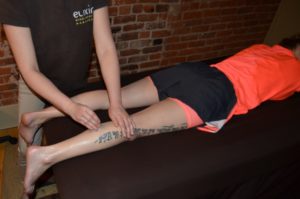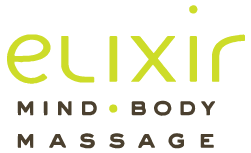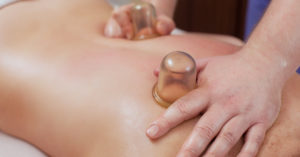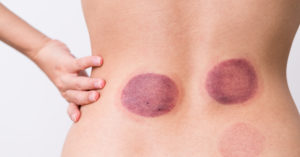What is Cupping Therapy?
Cupping therapy is an ancient form of medicine still being used in our modern era in alternative or complementary medical practices. Special cups (usually made of glass or silicone) are put onto your skin to create suction. People use cupping for many purposes; including pain relief, inflammation, relaxation and as a type of deep tissue massage. The suction or negative pressure enables inflexible soft tissue to release, loosens connective tissues, and it breaks up and drains stagnation of blood and lymph by increasing good flow. It is especially effective in conjunction with other more commonly used massage compression techniques.
Elixir Massage has cupping protocols that use soft silicone cups. The therapist will both place the cups in stationary holds for a short time and also glide them across your oiled skin for a deep rolling massage effect. The feel of cupping, while deep, is not as intense as deep tissue massage. It is powerful without being painful, although some more sensitive areas being treated can be momentarily uncomfortable. You may experience some delayed muscle soreness that will be similar to how you feel after unaccustomed or strenuous exercise. Remember to speak with your therapist to make sure the therapy is within your personal comfort level.
Elixir Cupping is Ancient Therapy With a Modern Twist
Cupping therapy might be in vogue now, but it’s nothing new, dating back to ancient Egyptian, Chinese, and Middle Eastern cultures. It is in the Ebers Papyrus, one of the oldest medical textbooks in the world and it describes how the ancient Egyptians used cupping therapy in 1,550 B.C.

You may have seen recent news about elite and Olympic athletes using a variety of cupping techniques to aid in recovery. In an August 16, 2016 article in The Independent, Dr Ayaaz Farhat, the co-director of the London Cupping Clinic is quoted as saying “The use of cupping therapy amongst athletes has grown over the last decade. It is a very effective way to enhance, encourage and even accelerate the body’s own immune response to injury. The main benefits are encouraging the inflammatory response of the body and speeding up muscular and soft tissue recovery after injury and strain. Cupping therapy has widened significantly though in the last few years and newer techniques are being used for conditions and diseases away from sports therapy such as migraines and eczema.”
Cupping Marks Are Not Bruises and Aid in Recovery
The most common misunderstanding regarding one of the most powerful and beneficial after effects of cupping, are the marks that sometimes result. When damage or injuries occur deep inside the muscle, bleeding often occurs causing deep bruises. There may also be edema in the area involving the coagulation of sticky proteins. The combined presence of these factors can create circulation stagnation to the area resulting in pain, dysfunction, and chronic conditions.
The cupping vacuum draws out the stagnant blood and sticky fluids from the area, bringing them to the surface so that healthy circulation can be restored to the afflicted area for quicker recovery. Where there is static lymph and blood, cellular debris and environmental toxins present in the body, cupping can leave marks. This indicates that the stagnation has been moved from the deeper layers of the tissues to the surface.
The color will depend on the level of stagnation in the area, the depth of the suction used, and the length of the placement. Traditional fire cupping with glass cups will leave darker marks that last longer than the silicone cupping techniques used at Elixir. Marks range from a pink to a bright red to dark purple, usually lasting 2 days to a week; sometimes longer if the person is sedentary, very ill, or engages in unhealthy habits (like smoking or drinking excessively). If there is no stagnation present, there will be only a pink marking which disappears in a few minutes to a couple of hours.
If the person receiving treatment sweats a significant amount daily no marks may ever occur. People who live in toxic environments (or have been exposed regularly to toxins like cigarette smoke) may consistently see marks. Areas where there is an old injury may require multiple cupping treatments to remove all stagnation. With consistent follow up treatments, the marks will become gradually lighter as pathogens are removed from the body.
Reasons to Avoid Cupping – Precautions and Contraindications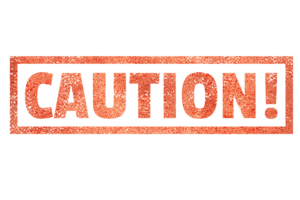 Cupping is contraindicated and best avoided in the following cases:
Cupping is contraindicated and best avoided in the following cases:
- During pregnancy, avoid cupping to the entire abdomen; the lower back and hips may be cupped until the sixth month of pregnancy, using light or medium cupping only
- Cardiac failure
- Renal failure
- Diabetes
- Severe edema
- Hemophilia
- Those undergoing cancer treatments such as radiation
- Leukemia
- Allergic dermatitis
- If you are taking blood thinners
- If you have high or low blood pressure
- If you have a fever
Cupping should not be applied on an area with:
- A hernia or where one has occurred in the past
- Broken bones
- Dislocations
- Slipped disks
- Sunburn
- Open sores or inflamed skin
- Acute stages of Psoriasis, Eczema, or Rosacea
If you are unsure whether a condition you have may be contraindicated, please first consult with your doctor to be sure cupping is right for you.
Want to try cupping for yourself?
Add a Soft Cupping Enhancement to your next massage or reserve the Overhaul Massage for more of a full body cupping treatment.
